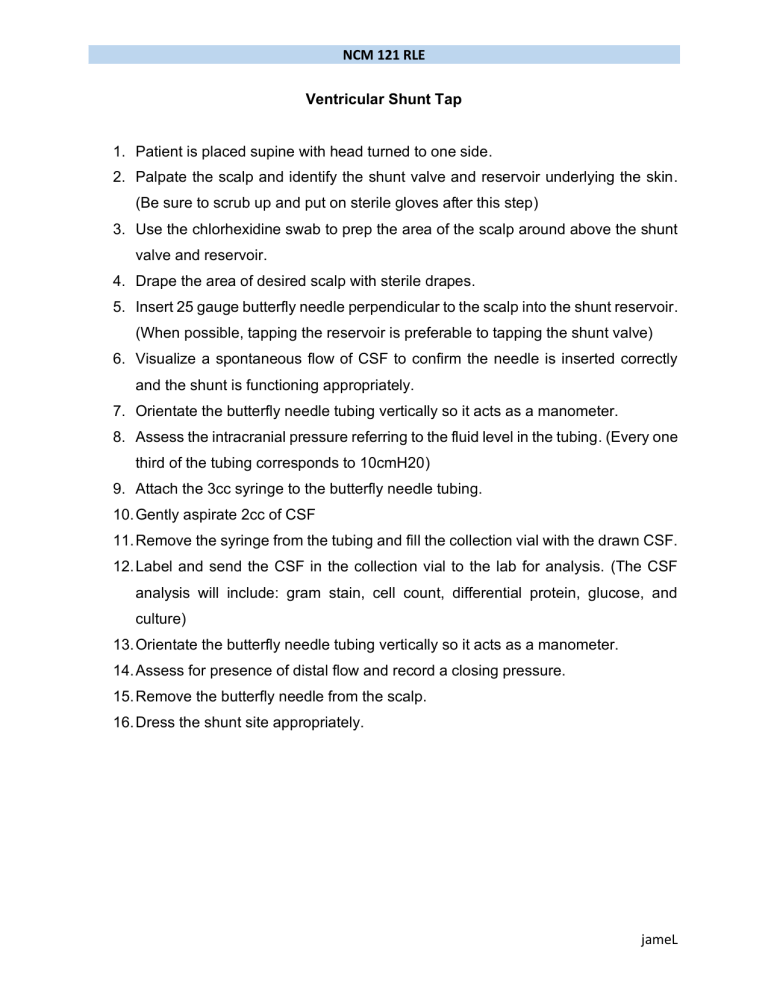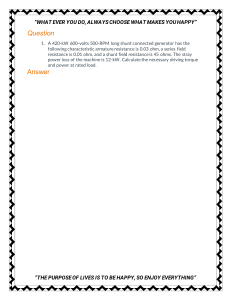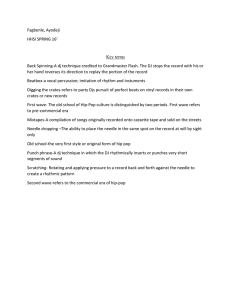
NCM 121 RLE Ventricular Shunt Tap 1. Patient is placed supine with head turned to one side. 2. Palpate the scalp and identify the shunt valve and reservoir underlying the skin. (Be sure to scrub up and put on sterile gloves after this step) 3. Use the chlorhexidine swab to prep the area of the scalp around above the shunt valve and reservoir. 4. Drape the area of desired scalp with sterile drapes. 5. Insert 25 gauge butterfly needle perpendicular to the scalp into the shunt reservoir. (When possible, tapping the reservoir is preferable to tapping the shunt valve) 6. Visualize a spontaneous flow of CSF to confirm the needle is inserted correctly and the shunt is functioning appropriately. 7. Orientate the butterfly needle tubing vertically so it acts as a manometer. 8. Assess the intracranial pressure referring to the fluid level in the tubing. (Every one third of the tubing corresponds to 10cmH20) 9. Attach the 3cc syringe to the butterfly needle tubing. 10. Gently aspirate 2cc of CSF 11. Remove the syringe from the tubing and fill the collection vial with the drawn CSF. 12. Label and send the CSF in the collection vial to the lab for analysis. (The CSF analysis will include: gram stain, cell count, differential protein, glucose, and culture) 13. Orientate the butterfly needle tubing vertically so it acts as a manometer. 14. Assess for presence of distal flow and record a closing pressure. 15. Remove the butterfly needle from the scalp. 16. Dress the shunt site appropriately. jameL



